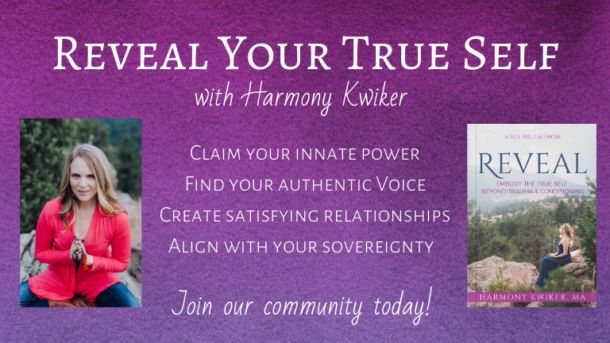Attachment styles were an adaptive response to the experiences we had in childhood. Intimate relationships engage our attachment system. The vagus nerve is responsible for nervous system regulation through the social engagement system (see Blog post: https://thespirituallyaligned.com/5-things-you-need-to-know-about-spiritual-alignment-and-polyvagal-regulation/). The interplay between the vagus nerve and attachment wounds can activate our reactivity even if there is seemingly no reason for the activation. An attachment style is a specific pattern of behavior that we exhibit in and around our relationships. Depending on how well we bonded to our caregivers in childhood, we relate to others from what we learned in those early bonding experiences. In the context of intimate relationship, our relating style is heavily influenced by our self-worth and interpersonal trust. Believing we need to stay in a relationship can actually cause us to meet it from our attachment wounds. Giving our relationship room to breathe, we can choose it consciously.
Because of the design of our attachment system, intimate partnership has the ability to activate old wounds in a surprising yet predictable way. When the habits and patterns of our intimate partner are similar to the patterns of our primary caregivers, our attachment system can become dysregulated in even the most ordinary circumstances. For example, if our caregivers were distracted and disengaged during our development, we might attract and be attracted to a partner who isn’t fully present and engaged. When the attachment system is activated, we can lose touch with our aware, adult self and react in a way that is disproportionate to the actual events. When our attachment wounds are activated, we are not seeing our partner for who they are. We also think they need to change so we don’t feel the way we do. When we feel trapped, like we need to stay in our relationship even when we’re unhappy, our attachment wounds become even more activated. In childhood, we had to stay and find a way to find safety.
In our intimate relationship, we are either reenacting our attachment wounds or we are integrating and healing. We are either asleep to our True Self or we are awakening. An attachment injury is an emotional wound to an intimate relationship. It happens after a breach of trust—particularly in a time of need or a moment of loss or transition. Once an attachment injury occurs, it can leave one or both partners feeling betrayed or abandoned. Attachment wounds are a current expression of a younger self. Accessing the inner young one in the moment is essential to repair the system. To create a secure attachment style, we need to repair the places within that are injured. We do this by tending to our inner young one and giving them what they have always needed.
Attachment Styles:
1. Secure: Develops in the presence of attuned, connected, and responsive caregivers. In childhood, caregivers empowered child to express their desires, emotions, and will. As a result, the adult thinks positively about themselves and of relationships. There is a comfortability in being interdependent with others. They knows that they’ll be okay when other people aren’t able to meet their needs. Express satisfaction in their relationships. Communicates their feelings and needs and listens with curiosity to feelings and needs of others.
2. Anxious-Preoccupied (Insecure): Develops in response to inconsistent caregivers. Caregivers were sometimes present, sometimes neglectful. In adulthood, the person has a negative view of self and a positive view of others. They want to be as close as possible to others, and they find others don’t want to be as close with them. Approval seeking as perception of worth comes from the way others treat them. They may feel an anxiousness that is only soothed by contact with another. Need to talk and feel heard.
3. Dismissive-Avoidant (Avoidant): Develops in the presence of disengaged, distant, or absent caregivers. Possesses a positive view of self and a negative view of others. Doesn’t want to feel dependent on others. Feels comfortable without closeness. Doesn’t want others to depend on them (“needy”). Tend to display defensive characteristics. Withholds feelings and doesn’t communicate openly.
4. Fearful-Avoidant (Disorganized): Develops in the presence of severe trauma. Has an unstable or fluctuating view of self and others. Isn’t comfortable getting close with others. Wants emotional closeness intimacy but doesn’t trust other people. Doesn’t want to depend on others. View themselves as unworthy of responsiveness, and don’t trust intentions of others. Frequently suppresses or denies their feelings. Uncomfortable expressing affection. Can appear like all of the attachment styles but more changeable.
When your attachment wounds are activated, you may not be aware of the wound. When the circumstances of our life mirror painful experiences from our past, our inner young one may become emotionally activated. Any time you find yourself thinking other people need to be different so you can feel regulated, this is a time to create a secure connection with your Self. Turn towards yourself and ask, “What do I need from myself right now?”
Self-love, self-honoring, and creating a secure connection with your Self is what heals the attachment wound.
References
Brennan, B. (1988). Hands of Light: A Guide to Healing Through the Human Energy Field. Bantam.
Heller & LaPierre (2012). Healing Developmental Trauma: How Early Trauma Affects Self-Regulation, Self-Image, and the Capacity for Relationship. North Atlanta Books.
Jones, J. & Thompson, E. (2022). A Subtle Energy Field Guide. Independently Published.
Judith, A. (2004). Eastern Body, Western Mind: Psychology and the Chakra System As a Path to the Self. Clarkson Potter.
Kelly, L. (2015). Shift into Freedom: The Science and Practice of Open-Hearted Awareness. Sounds True.
Kwiker, H. (2022). Align: Living and Loving from the True Self. Mantra Books, UK.
Seigal, D. (2022). IntraConnected: MWe (Me + We) as the Integration of Self, Identity, and Belonging. W.W. Norton and Company.


